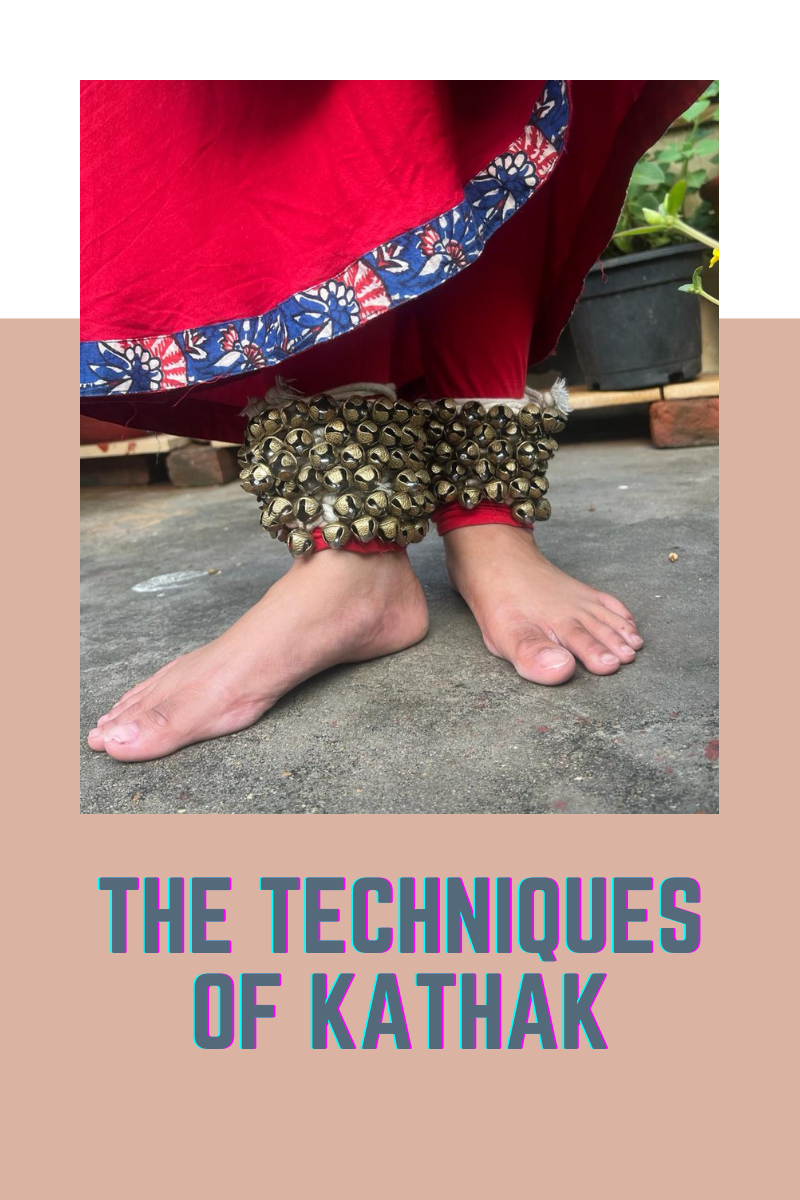
Kathak, a classical dance style that originates from the northern regions of India, is a captivating art form that seamlessly combines rhythm, narrative, and intricate motions. As performers gracefully traverse the stage, they skillfully fuse footwork, hand movements, and facial expressions to communicate feelings, stories, and cultural heritage. This article takes you on an exploration of the fundamental techniques intrinsic to Kathak dance, offering insights into its deep-rooted past and the distinctive components that contribute to its enduring allure.
Footwork: The Rhythmic Tapestry
At the heart of Kathak dance lies its distinctive footwork, a symphony of rhythmic patterns that create an enchanting tapestry of sound and movement. Dancers expertly strike the floor with their feet, producing intricate rhythms that mirror the beats of the music. The footwork, known as “Tatkar,” is not just a display of virtuosity; it serves as a form of percussion, contributing to the music of the performance. From the brisk “Chakkars” (spins) to the delicate “Tihaais” (complex rhythmic patterns), the footwork in Kathak is a testament to the dancer’s skill and mastery over rhythm.
Hand Movements: The Language of Gestures
Hand gestures, or “Mudras,” are an integral component of Kathak dance, enabling dancers to tell stories and convey emotions with grace and precision. Each mudra holds a specific meaning, allowing dancers to depict characters, scenes, and abstract concepts. The intricate movements of the fingers and wrists are meticulously choreographed, creating a visual language that adds depth and authenticity to the performance. The expressive power of these mudras is exemplified in the depiction of deities, emotions, and even natural elements such as trees and animals.
Facial Expressions: The Mirror of Emotions
The face is the canvas upon which emotions are painted in Kathak dance. As dancers perform intricate footwork and hand gestures, their facial expressions play a vital role in conveying the underlying emotions of the narrative. From joy and sorrow to anger and love, the eyes, eyebrows, and lips come together to create a vivid emotional landscape. The synchronization of expressions with the movements and music elevates the storytelling, allowing the audience to connect deeply with the performance.
Importance of Rhythm and Improvisation
Rhythm serves as the pulsating core of Kathak dance, infusing vigor and liveliness into each movement. Dancers incorporate rhythmic syllables known as “Bols” while executing footwork and gestures. This rhythmic exchange with the music not only amplifies the visual allure but also mirrors the dancer’s grasp of intricate temporal patterns. Moreover, Kathak dance celebrates spontaneity by welcoming improvisation, granting dancers the liberty to artistically construe and react to the music. This impromptu element injects dynamism into every performance, ensuring that each rendition holds a distinctive charm.
Conclusion
Kathak dance is a celebration of movement, rhythm, and expression. The techniques of footwork, hand gestures, and facial expressions come together to create a multi-dimensional art form that has enthralled audiences for centuries. As dancers master these techniques, they become storytellers, weaving tales of tradition, culture, and emotion through their graceful movements. With every beat and gesture, Kathak dancers keep alive the legacy of this enchanting dance form, ensuring that its timeless beauty continues to captivate hearts across the world.
About the Author: – Neha Khunteta
She is one of the best Kathak Trainers in Jaipur and has been associated with it for more than 10 years and the founder of Kathak By Neha the best Kathak dance academy in Jaipur.
Hope this blog helps you in some other way; feel free to contact us on
Email: kathakbyneha@gmail.com or contact: +91-8619116616
Don’t forget to follow us on Quora, Instagram, Facebook, and subscribe Youtube for videos.
